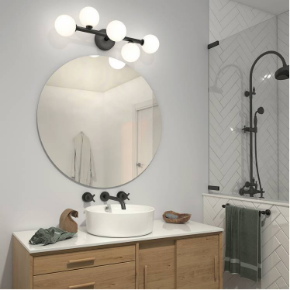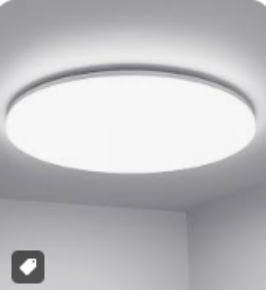A bedroom is the room where you start and end your day. Lighting your bedroom will take the space to the next level, and give that it is a space that is primarily just for you. A bedroom is a place of rest. Using layers of ambient, task and accent lighting with careful placement and dimming controls will have a great impact on the bedroom’s look and feel. Bedroom lighting is the soul of the home. Lighting is one of the most important elements in creating a comfortable and functional bedroom. It affects not only the aesthetics of the space but also influences your mood and daily activities. Understanding how to layer lighting effectively and select the right bulbs can transform your bedroom into a relaxing sanctuary or a productive workspace.
Bedroom Lighting Basics
In this guide, we’ll cover how to choose and layer different types of bedroom lights. This includes selecting the right bulbs for brightness and color.

Layering Bedroom Lights
Ambient Lighting Start with ambient lighting, which provides overall light for the room. This can come from natural sources like windows or from ceiling lights and floor lamps. This type of lighting is good for general tasks like cleaning or making the bed.
How to Achieve Ambient Lighting
For ambient lighting, consider the following options:
- Ceiling Fixtures: Flush mount ceiling lights, chandeliers, and pendant lights are popular choices. They provide a broad, even distribution of light.
- Floor Lamps: These can also serve as ambient light sources, especially if positioned strategically around the room.
Task Lighting For activities that need more focused light, like reading or working, add task lighting. This can be table lamps, swing-arm lights, or pendants near your bed. Make sure the light is bright enough for the task and positioned well.
How to Incorporate Task Lighting
To effectively incorporate task lighting:
- Table Lamps: Use table lamps with light-colored shades for reading or working. Dark shades can limit light output and make reading less comfortable.
- Swing-Arm Lights: Ideal for focused tasks like reading, as they can be adjusted to direct light where needed.
- Bedside Pendants: Low-hanging pendants or wall-mounted lights next to the bed provide focused light for bedtime reading without disturbing your partner.
Ensure that your task lights are positioned to minimize shadows and maximize comfort.
Accent Lighting Accent lighting highlights features like artwork and adds a cozy glow. You can use recessed lights, wall sconces, or tape lights to create this effect.

How to Use Accent Lighting
Consider these options for accent lighting:
- Recessed Lighting: Install recessed lights in the ceiling to highlight artwork or architectural features.
- Wall Sconces: These can add a decorative touch and create a soft, inviting glow.
- Tape Lights: Use LED tape lights to add subtle illumination to shelves or under cabinets.
Dimmers: Dimmers let you adjust the light intensity, making them useful for different moods and activities. They are easy to install and work with most lights, but make sure they match your bulb type to avoid flickering.
Benefits of Dimmers
- Flexibility: Adjust light levels for different tasks, from bright lighting for reading to soft light for winding down.
- Mood Setting: Create a variety of atmospheres by controlling light intensity.
- Energy Efficiency: Lowering light levels can reduce energy consumption and extend bulb life.
Choosing the Right Bulb
Brightness Decide how bright you want your room to be. For a bedroom, a range of 2,000 to 4,000 lumens is typical. Choose a bulb with the right brightness for your needs.
Color Light color affects how you feel. Cool colors like white and blue are good for tasks but can interfere with sleep. Warm colors, like yellow, are better for relaxing activities in the evening.
Creating a Balanced Lighting Plan
To create a well-balanced lighting plan:
- Assess Your Needs: Determine the functions of your bedroom and how you use the space.
- Layer Your Lighting: Combine ambient, task, and accent lighting to meet various needs.
- Select the Right Bulbs: Choose bulbs based on brightness and color temperature to match your preferences.
- Install Dimmers: Incorporate dimmers to adjust light levels and create different moods.

Conclusion
Mastering bedroom lighting involves understanding the different types of lighting and how they work together to create a functional and inviting space. By layering ambient, task, and accent lighting, choosing the right bulbs, and incorporating dimmers, you can transform your bedroom into a place that meets all your needs, from relaxing and unwinding to working and reading. With these tips and expert advice, you’ll be well on your way to designing a beautifully lit bedroom that enhances your everyday life.















